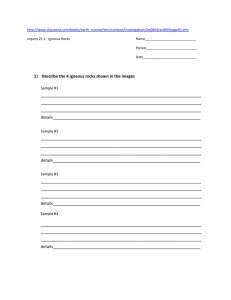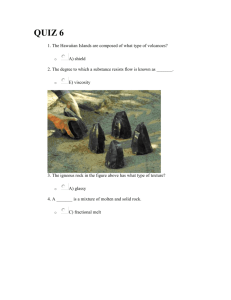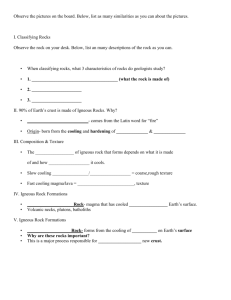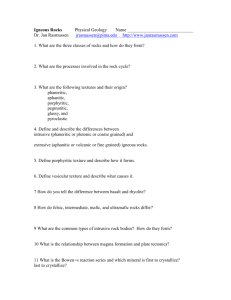Igneous Rock Textures
advertisement
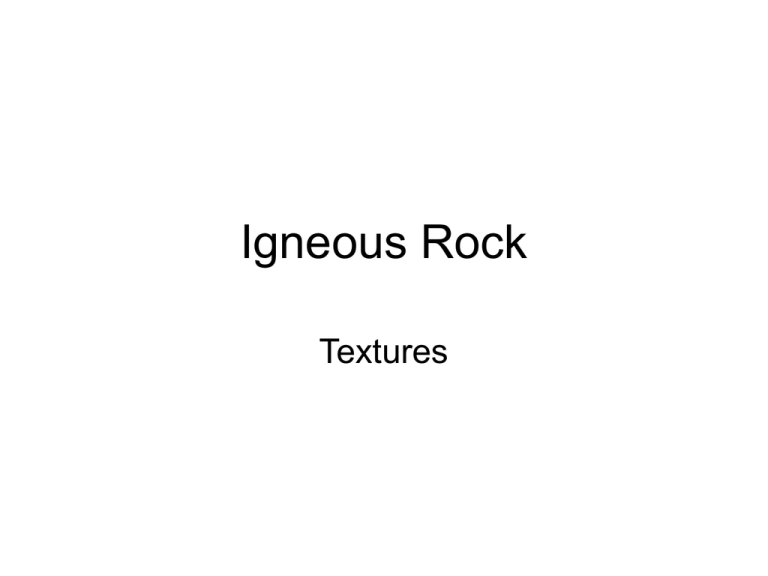
Igneous Rock Textures IGNEOUS ROCK TEXTURES • Phaneritic Texture This texture forms by slow cooling of magma deep underground in the plutonic environment. Phaneritic textured rocks are comprised of large crystals that are clearly visible to the eye with or without a hand lens or binocular microscope. IGNEOUS ROCK TEXTURES • Aphanitic Texture Aphanitic texture consists of small crystals that cannot be seen by the eye with or hand lens. The entire rock is made up of small crystals, which are generally less than 1/2 mm in size. Texture results from rapid cooling in volcanic or hypabyssal (shallow subsurface) environments. IGNEOUS ROCK TEXTURES • Porphyritic Texture Porphyritic rocks are composed of at least two minerals having a conspicuous (large) difference in grain size. The larger grains are termed phenocrysts and the finer grains either matrix or groundmass IGNEOUS ROCK TEXTURES • Glassy Texture Glassy textured igneous rocks are non-crystalline meaning the rock contains no mineral grains. Glass results from cooling that is so fast that minerals do not have a chance to crystallize. IGNEOUS ROCK TEXTURES • Vesicular Texture Scoria Tiny holes called vesicles which formed due to gas bubbles in the lava or magma. Very porous. May resemble a sponge. Commonly low density; may float on water. Refers to vesicles (holes, pores, or cavities) within the igneous rock. Vesicles are the result of gas expansion (bubbles), which often occurs during volcanic eruptions. Pumice IGNEOUS ROCK TEXTURES • Fragmental Texture Reserved for pyroclastic rocks, those blown out into the atmosphere during violent volcanic eruptiions. These rocks are collectively termed fragmental. Comprised of numerous grains or fragments that have been welded together by the heat of volcanic eruption.

